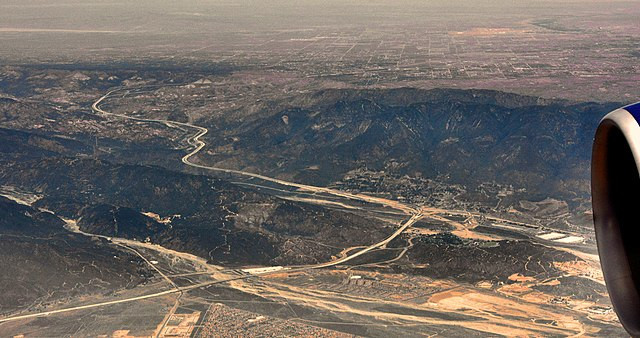The recent 4.4-magnitude earthquake that struck just northeast of downtown Los Angeles serves as a stark reminder of the ever-present seismic threats facing Southern California. While the quake itself caused no major damage, seismologists warn that it occurred along a section of the Puente Hills thrust fault system-an underground fault that experts have long feared could trigger a catastrophic event in the heart of Los Angeles.
"It's a reminder that this is actually our most dangerous fault," said Dr. Lucy Jones, a renowned earthquake expert and seismologist at Caltech. According to Jones, the Puente Hills thrust fault is potentially even more perilous than the more famous San Andreas Fault. Despite its relative obscurity, the Puente Hills fault runs directly beneath some of the most densely populated areas in Los Angeles, including downtown, the San Gabriel Valley, and parts of northern Orange County.
Monday's tremor was centered around El Sereno, an Eastside neighborhood of Los Angeles that has experienced a series of small quakes since June. These recent seismic events, though modest, are unsettling because they highlight the underlying threat posed by the Puente Hills thrust fault system. James Dolan, a professor of earth sciences at USC, notes that these quakes are clustered beneath the main Puente Hills fault plane. While he cautions against overinterpreting these small tremors, Dolan emphasizes the importance of being prepared for more significant seismic activity.
Californians are no strangers to the San Andreas Fault, which runs mostly through remote areas in Southern California. The San Andreas has been the subject of numerous disaster scenarios, including a hypothetical magnitude 7.8 earthquake that could devastate a broad swath of the region. However, despite its rural location, the San Andreas' potential for a massive quake-capable of causing widespread destruction-remains a serious concern.
In contrast, the Puente Hills thrust fault system, which could produce a magnitude 7.5 earthquake, presents a different but equally terrifying risk. Unlike the San Andreas, the Puente Hills fault is buried deep beneath the urban core of Los Angeles, where an earthquake could have catastrophic consequences. According to the U.S. Geological Survey (USGS) and the Southern California Earthquake Center, a major quake on this fault could result in up to 18,000 deaths and cause an estimated $252 billion in economic losses, making it the most costly disaster in U.S. history.
The potential devastation is exacerbated by the fact that many buildings in the region, particularly older, unretrofitted structures, are highly vulnerable to intense shaking. An interactive map from the Los Angeles Times illustrates the potential impact: a magnitude 7.5 earthquake on the Puente Hills fault would cause "violent" shaking-capable of toppling buildings-across large areas of the city, including Glendale, Koreatown, downtown L.A., and Pasadena.
Despite these dire projections, some communities have been slow to implement mandatory retrofitting for older buildings, leaving many residents at risk. The soft sediment underlying the L.A. Basin could further amplify the energy of a quake along the Puente Hills fault, intensifying the destructive force.
Historically, the Puente Hills thrust fault has produced significant quakes, though not frequently. The 1987 Whittier Narrows earthquake, which registered a magnitude 5.9, resulted in widespread damage, including the destruction of over 100 homes and more than 1,000 apartment units. More recently, in 2014, a magnitude 5.1 quake struck La Habra, causing minor structural damage and reminding residents of the fault's destructive potential.
The Puente Hills fault was largely unknown to scientists until it ruptured in 1987. It wasn't until 1999 that the fault was fully recognized and mapped. The revelation came five years after another major earthquake-the magnitude 6.7 Northridge quake-struck on an "invisible" fault that scientists had not previously identified.
Given the recent seismic activity and the underlying risks, Dr. Jones urges residents to take proactive steps in preparing for a major earthquake. "People really need to be ready for a very, very large earthquake, or earthquakes, in L.A.'s future," she said. "It's going to happen. We don't know when. We don't know exactly which fault is going to generate those earthquakes, but they are going to happen."
Jones also emphasized that preparation goes beyond just having supplies like water. "Talking with your friends and family about it and having a plan together is probably more important than anything else," she added.






